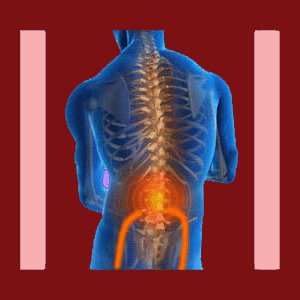
Referred facet joint pain is a common consequence of various processes that might cause mechanical dysfunction and/or neurological compression in these spinal connections. Referred pain is a greatly misunderstood topic in the orthopedic and neurology communities, with many subjective myths taking precedent over the objective facts. It is the goal of this post to clarify the facts of referred spinal joint pain and debunk conditions that are often misdiagnosed as coming from the facet joints.
This post explains and investigates the realities of referred pain in the body stemming from facet joint pathology in the vertebral column. If you have been diagnosed with referred pain or suspect that this might be your issue, then this post is perfect research material to get you on the right path towards relief.
What is Referred Facet Joint Pain?
Referred pain of any type denotes symptoms that occur away from the actual anatomical area of causation. Basically, this means that although the cause of the pain might exist in the facet joint, some or all of the symptoms are actually experienced in other bodily areas. This is a familiar concept to students of the spine, since many diagnoses here can cause referred pain through various processes, including mechanical dysfunction, structurally-induced ischemia and neurological compression.
Referred pain might exist along with symptoms at the site of origin or might be the sole expression of pain in the body. When symptoms exist at the origin, as well as referred locations, then diagnostic processing stands a better chance of linking the 2 locations together. If symptoms only exist in alternate locations than the origin, then diagnostic efforts tend to go awry and relate the pain to localized or other unrelated sources instead of the true symptomatic causation.
Referred Pain Locations
Facet joint pathology can exist anywhere in the spine, with the most common regions being the mid to lower cervical spine and the lower lumbar spine. Referred pain will vary in location depending on where the source originates:
Referred pain from cervical facet pathology might affect the shoulders or upper arms, the upper back and even the entire neck. Symptoms might include pain, stiffness, limited range of motion, pain upon motion, burning and even some degree of tingling, weakness or numbness.
Referred pain from lumbar facet joint issues will generally affect the buttocks and upper legs. Pain might exist in the hip joint or even into the groin. Occasionally, pain might ascend upwards and affect the mid back or flank.
Referred Facet Joint Pain Facts and Myths
Yes, referred pain is real and can occur. However, the facet joints are commonly blamed for causing symptoms that are completely illogical from a clinical point of view, so it is crucial to know the facts about referred pain and the capacity of these small joints to cause symptomatic expressions:
Mechanical dysfunction causing localized or referred pain is generally only seen in cases of very severe structural change in the joints. Typically, more than 1 joint will require moderate to severe degeneration or injury, while a single joint might require extreme degeneration or injury to explain serious and persistent symptoms. Mechanical dysfunction is usually expressed upon mobilizing the affected joint and does not present when the joint is not stressed or moved.
Neurological compression might affect small local nerves that will produce local pain. When a spinal nerve root is affected by compression, such as that committed as a combined effort of facet joint hypertrophy and other spinal changes (general osteoarthritis, bulging or herniated disc, changes in curvature, changes in vertebral alignment), symptoms are likely to be referred. Depending on which nerve root is affected, symptoms will exist in the area of the body served by the compressed nerve. Symptoms in these cases should correlate exactly with neurological mapping and should always be evaluated by an expert spinal neurologist for best outcomes. Many, many cases of nerve compression are misdiagnosed…
Most facet joint-related pain is minor and manageable, regardless of where it occurs.
Severe expressions of pain should have obvious and objective structural evidence linking a mechanical dysfunction or neurological compression issue to the joint.
Remember that regional ischemia is a far more frequent cause of chronic back pain and sciatica than facet joint changes. This process will leave no structural evidence and is directly responsible for many instances of misdiagnosis in the back pain treatment arena.
Facet Joint Pain > Facet Joint Symptoms > Referred Facet Joint Pain





